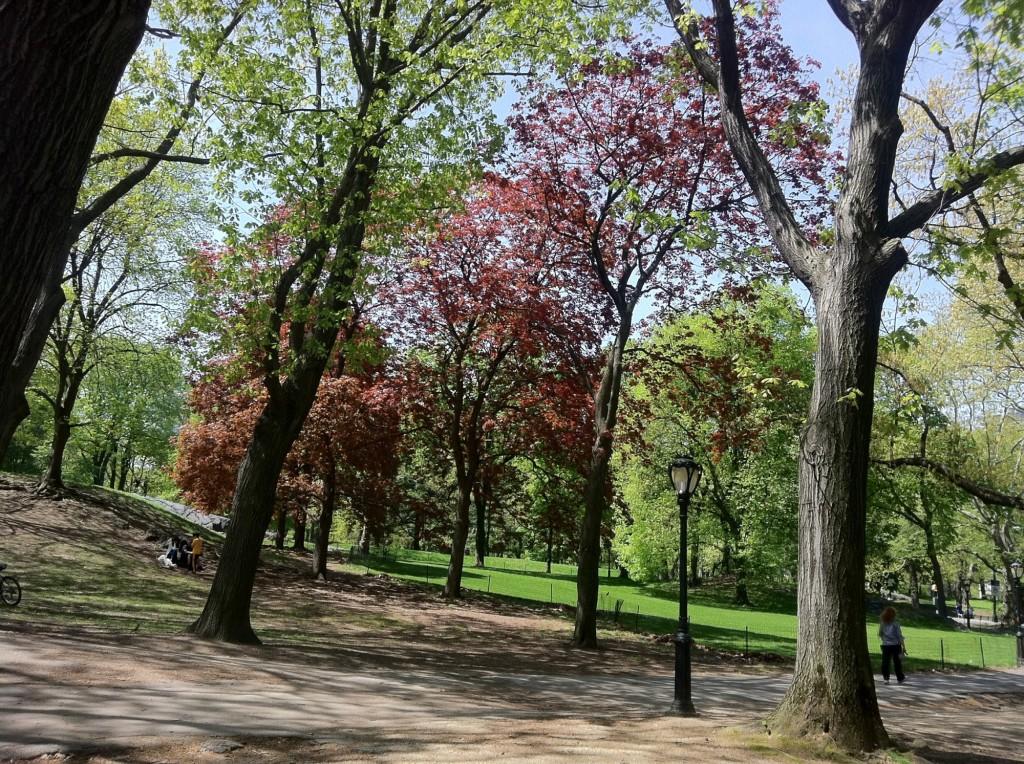Urban Explorer: Exploring Manhattan Can Be a Walk in the Park
August 4, 2011

Looking at any Manhattan map, one will notice a giant green rectangle smack in the middle of the city running from 59th to 110th street. An oasis in an urban jungle, this green patch of nature plays a different role for each Fordham College at Lincoln Center (FCLC) student.
None of these students, however, think of Central Park as the location for one of the first significant African-American communities during the mid 1800s—Seneca Village. This little village was located in what is now the upper east ’80s side of the park. Now it is obviously no more than a memory. Also forgotten are the small communities of European immigrants who used to live in the area, and were moved in order to make room for the park.
The designated designers of America’s first public park were chosen through a design contest; the winners, Olmstead and Vaux, who took 6 percent of Manhattan’s precious real estate and created a landscape of variety and harmony, mixed pastoral open fields with intimate nature paths and ornate architectural additions. Even decades later, Central Park’s present state still reflects these two men’s vision of serenity.
The astounding, unparalleled landscaping and sheer size of Central Park proves that even in a huge, bustling urban area, nature thrives. It is, as one of my out-of-town friends pointed out, “like a film negative of Manhattan,” where instead of the colors being inverted from green to red, the environment is flipped over from man-made to natural. The harmony running between distinct sectors and hidden jewels defines Manhattan and is reflected throughout Central Park, from the John Lennon lovers at the Imagine Circle to the toddlers splashing around near the Boat House.
Xoxo
Your Urban Explorer
Sheep Meadow
West Side from 66th to 69th Street
One of Central Park’s most expansive open fields is lush, green and, every summer, dotted with sunbathers. The home to many concerts, protests and demonstrations in the ’60s and ’70s, it contrasts with Olmstead’s vision of Sheep Meadow as a serene getaway. While it has calmed down since then, many young spunky college students, like Amy Buckham, FCLC ’14, are intrigued with the Meadow’s ability to attract “guitar playing hippie families.” Buckham is drawn to its open air of self-expression that is sometimes stifled or unheard on city streets.
Conservatory Water
East Side from 72nd to 75th Street
Sometimes some of the best discoveries and adventures happen when you get lost. Connor Redpath, FCLC ’14, found that his best experience in Central Park was when he suddenly stumbled upon a pond full of toy boats. “The weather was perfect and the trees were beautifully highlighted by the sun. And, of course, some crazy good violin lady was playing some really nice music, too,” Redpath said. Intrigued by his comments, I couldn’t help but venture to the Conservatory Water myself and stand in awe of the cuteness of the polo-clad elementary-old boat racers. Wanting to get in touch with my inner child, I rented my own little boat and sailed alongside the elementary captains.
The Ramble
Mid-Park at 79th Street
After class ends, one of the relaxing things to do is to take a long walk through a more secluded part of Central Park with a friend. After several of these walks, Isabella Gianatiempo, FCLC ’14, and I discovered the Ramble. This is a true secret of Central Park, and is not advised for very late night walks. However, during daylight and sunset hours, these 38 acres of dense forest, sloping hills, happily surprising arches, overpasses and quaint streams under wooden bridges make the Ramble a secluded “wild garden,” and seems to evoke free roaming and natural conversations. Entering the Ramble from Bethesda Fountain, you may find yourself speaking about philosophy class, and as each twist and turn develops, you find that the conversation has touched upon everything from crumbling leaves, polyester dresses, boys and reincarnation.
Belvedere Castle
Mid-Park at 79th Street
The Disney film, “Happily Ever After,” about a displaced princess, was filmed in Central Park. While the film is fiction, there is, in fact, a castle on the grounds of the park. The Belvedere Castle, built around 1865, was created to enhance the surreal beauty of the park. Although the castle hasn’t held any real royalty, Maddy Rivera, FCLC ’12, believes that, “Until I marry Prince Harry, this is my closest taste of royalty.” Royal or not, this ancient castle has some of the best views of Central Park and a unique look at the New York City skyline. Try packing lunch and eating on the gray steps of the castle, because whatever you bring will feel like a meal fit for a king.











